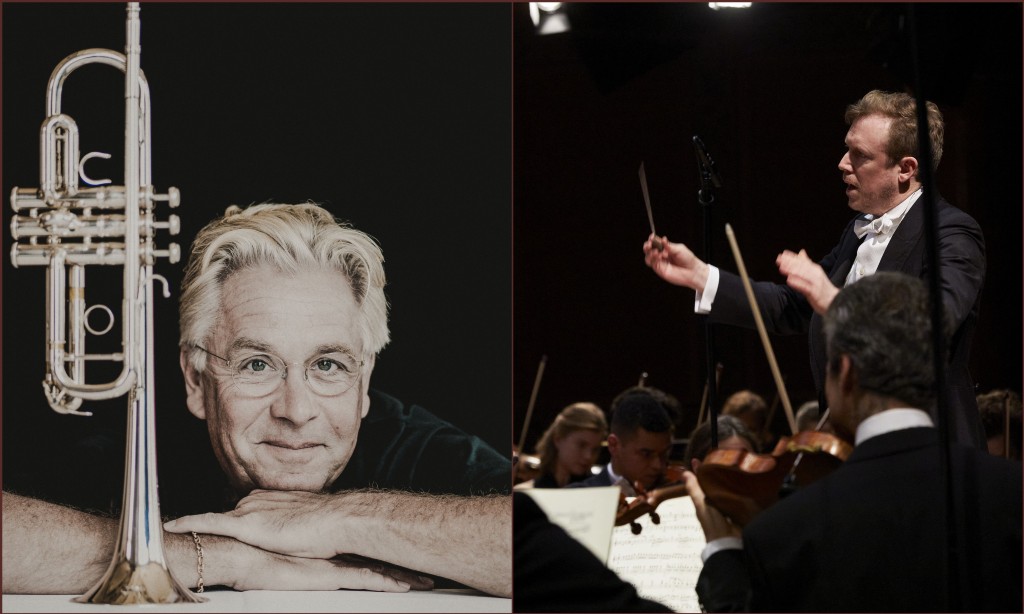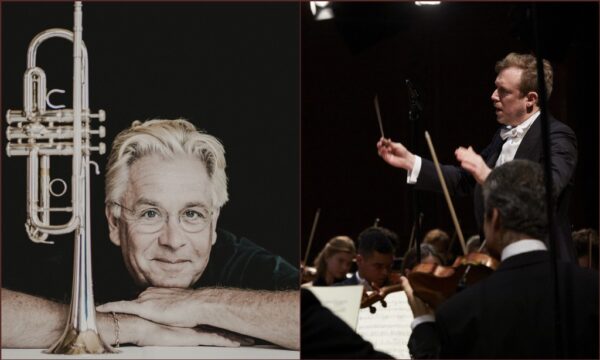Unless I am mistaken, the Orchestre de la Suisse Romande had never before interpreted a symphony by Ralph Vaughan Williams, whose 150th anniversary of birth was celebrated in 2022. But, if we closely study the programming of the great European orchestras – excluding the British, champions of this music – we have to note the singular rarity at the concert of an English master who should finally gain the recognition he deserves, as he is one of the major composers of the 20th century. The late Bernard Haitink once told me, on the sidelines of a master class at the Lucerne Festival, that he would have liked to conduct more of his works during his career. We are thus delighted with the daring of a “100% British” program, especially since we hear, in the first part, a contemporary work for its Swiss creation. The evening was a crescendo of surprises and emotions.
The listener thrills and jubilates at the instrumental tightrope walk he is witnessing
The bond of esteem established between the trumpeter Håkan Hardenberger and the composer Mark-Anthony Turnage (born in 1960) has given rise to pieces of formidable difficulty. As early as 2004, the two artists distinguished themselves in the concerto From the Weckage. In 2014, Turnage decided to renew the experience by offering a work bearing the very first name of the Swedish soloist: Håkan. The story goes that the trumpeter complained about the excessive ease of the piece ! Its final version did not engender any comment on its part, and we understand why. It offers all the technical difficulties for a virtuoso of his caliber ! The 1st movement, entitled “Falak”, refers to a melody drawn by Turnage from the Pamir mountains, on the borders of Pakistan, Afghanistan and Tajikistan. Continually imposing a perfect technique coupled with an unparalleled physical commitment, Håkan Hardenberger – supported by conductor Daniel Harding – takes us to mountain peaks, with virtuoso ascending trills, with dissonances that make one think of Charles Ives, in a sort of meta-instrumental response to the famous Unanswered question once posed by the American composer : the trumpet, but to the full extent of its possibilities. The sound, the vibrato always impeccably controlled, everything gives the impression of infinite power. The listener quivers and jubilates at the instrumental tightrope walk he is witnessing. More contemplative, the 2nd movement “Arietta” creates a mysterious and less sparkling atmosphere. The soloist plays with weightlessness, emerging from a kind of orchestral threna, soon launching into a striking high-pitched cavalcade. We hear reminiscences of The Firebird ; an assumed wink or a simple musical palimpsest, Stravinsky’s reference is no coincidence, so much do we enjoy grasping the choreographic dimension of the page. The 3rd movement “Choral variations” promises to be just as cataclysmic. Even if sometimes some Mahlerian bells emerge, the trumpet appropriates the whole sound space with thunderous fortissimos. A chase then begins with the orchestra for a final bouquet of trills and glissandos. Then, the soloist expresses himself openly, offering repeats and sound variations at the limits of the conceivable. The orchestra then resumes its lugubrious elegy, in a magmatic nocturne, with staccatos with colorful echoes worthy of Edvard Munch, before a Dionysian tutti bursts to conclude the piece and leave the audience literally out of breath. Triumph in the hall. As an encore, a muted jazz piece, My Funny Valentine, creates a nice decompression chamber between Turnage and Vaughan Williams.
A deeply fervent, human and colorful vision
ThE Symphony in D Major, adopts the key of the Sibelius’ Second Symphony, to which Vaughan Williams made the surprise of the dedication. He began it in 1938, while working on the opera The Pilgrim’s Progress after John Bunyan, which he feared not to finish. He then placed part of the operatic material in the symphony. Moreover, if he was not in the habit of numbering his works, the critics took care of it for him. This authorizes to speak of his Fifth Symphony, of all the most played, which celebrates its 80 years, since the creation took place during the Concerts Promenades on June 24, 1943 under the baton of the composer. It immediately caused a stir, becoming Vaughan Williams’ most famous symphony. Listeners were struck by the serenity of the work, seen as a response to the barbarity of war. Of the 1st movement, Harding emphasizes the magnitude and quiet majesty. Visibly at ease in this music, he interprets it with a fervor reminiscent of Carlo Maria Giulini, installing emotion. Caressing the orchestra, the English conductor flatters silky strings, with shimmers that sometimes evoke Debussy’s La Mer with this tonal uncertainty, using the pentatonic scale, hesitating between the Mixolydian and Dorian mode. He interprets this ambiguous movement with a real color, a poetry, sometimes absent from recent interpretations (we allude to the vision of Sir Simon Rattle given at the Proms in 2020 with the London Symphony Orchestra). Here, the wheat fields of Wiltshire or Somerset parade, while the vehemence of thE fortissimo sections establishes a heroic force – even a violence – which contrasts with the apparent rurality of the work. Everything contributes to drawing in this Preludio a Pastoral in miniature, immediately idiomatic, transporting us to bucolic landscapes that remind us of works by Thomas Hardy or Brontë, at the same time windy, melancholic and luminous. Placed in second position – as it will be the case in the future Symphony n°8 – the Scherzo contrasts, as it should, with the naturalistic atmosphere of the Preludio. Delightfully mocking and light, it can recall the exhilarating echoes of the same composer’s London Symphony Walk (in its revised 1920 version), with strings still crisp and sharp. It was certainly the most moving passage of the evening, thanks to this English spirit so well captured, made of humor and very great elegance, tinged with melancholy. The 3rd movement, Romanza, is indisputably the heart of the work. Adrián Verdugo’s English horn, expressive and telluric, manages to capture the Tristanian aspect (a Shepherd’s song?), while the orchestra deploys throughout this Lento a wide breathing, always fervent, with the false airs of Dvorak’s Symphony from the New World. It is a suspended moment of time, inviting slowness and stillness, sculpting yet another contemplative summer landscape (far from the humus-filled autumnal twilight of Haitink on record, from the lack of pathos emphasized in the historical version of Sir John Barbirolli in 1944 or the uncompromising scansion of Sir Adrian Boult in 1953 for his first complete set). Here is the Tristan of Tintagel and always these undulating fields of wheat, over which sometimes hovers a dull anxiety. The 4th movement, Passacaglia, allows us to appreciate a total concord between the strings and the conductor, who brings to completion his impressionist, vigorous and fervent vision, which ends in an Indian summer serenity, creating an emotional and delighted silence in the audience. Harding did not necessarily choose the sweet serenity so often depicted about these pages, but a journey filled with images, in a pictorial approach crossed by references revealed by a detailed work on the score. Strongly involved, the Orchestre de la Suisse Romande, proves to be very accurate, animated by a truly English spirit and a beautiful complicity with the conductor. To paraphrase Mahler who said: “My time will come”, we believe that after such an evening, the time of Vaughan Williams has finally arrived too. We can only agree with the dedicatee of the work : we have indeed witnessed a “sunny world”, in a deeply human, warm and moving interpretation that makes us dream of what could be a complete cycle of Vaughan Williams’ symphonies by the Orchestre de la Suisse Romande and Daniel Harding.
Philippe Rosset
5 avril 2023



